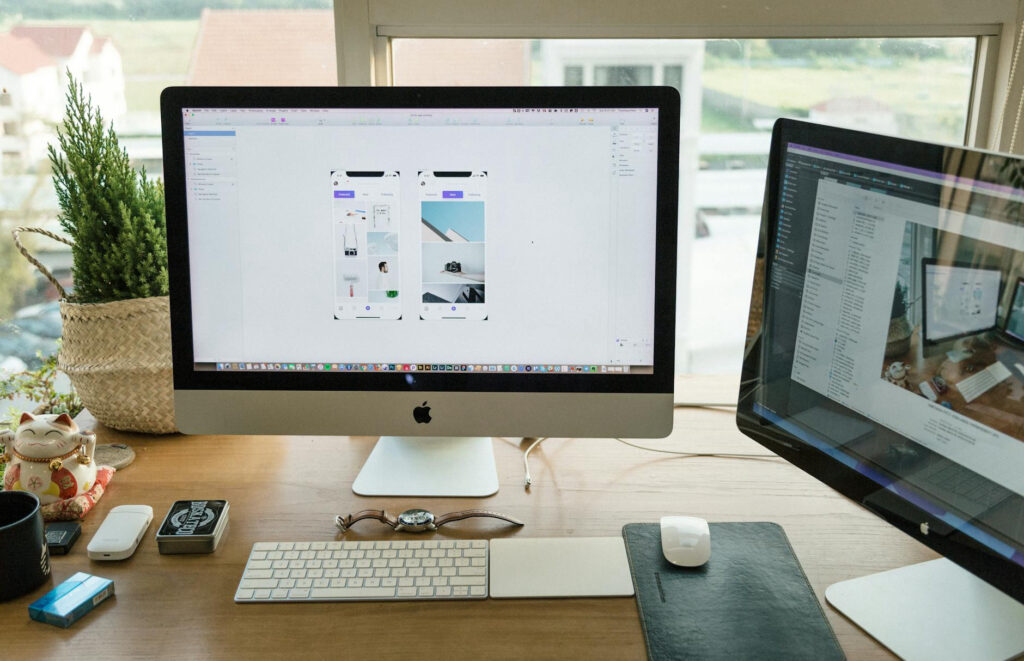The User-Centered Design Method for Website Building
A website is often the first interaction a potential customer has with a brand. This initial interaction can set the tone for the relationship between the user and the brand. To create a positive and lasting impression, it is essential to prioritize the needs, behaviors, and preferences of users. This is where the user-centered design (UCD) method comes into play. UCD is a design philosophy and process that places the user at the forefront of every stage of the design and development process, ensuring that the final product is intuitive, accessible, and engaging.

Understanding User-Centered Design
User-centered design is an iterative process that involves a deep understanding of the users for whom the website is being designed. It emphasizes designing for real people rather than a generic audience. The core principles of UCD include focusing on users’ needs, involving users throughout the design process, and iterative design to refine solutions based on user feedback.
The User-Centered Design Process
1. Research and Empathy:
The foundation of UCD is understanding the users. This involves conducting comprehensive research to gather insights into user behaviors, motivations, and pain points. Techniques such as user interviews, surveys, and ethnographic studies can be employed to build empathy with the users. Creating user personas based on this research helps in visualizing the target audience and their needs.
2. Defining Requirements:
Based on the insights gathered during the research phase, the next step is to define clear and concise requirements for the website. These requirements should reflect the users’ needs and business goals. This stage also involves identifying key functionalities and features that the website must have to address user needs effectively.
3. Ideation and Conceptualization:
With a solid understanding of the users and clear requirements, the design team can brainstorm and conceptualize different design solutions. This stage often involves creating wireframes and low-fidelity prototypes to explore various layout and interaction possibilities. Collaboration and creativity are crucial during this phase to generate innovative ideas that resonate with users.
4. Prototyping:
Prototyping involves creating interactive, high-fidelity versions of the website. These prototypes simulate the user experience and allow for thorough testing and feedback collection. Tools like Sketch, Figma, or Adobe XD can be used to build clickable prototypes that users can interact with, providing a realistic sense of the final product.
5. User Testing and Iteration:
User testing is a critical component of the UCD process. It involves observing real users as they interact with the prototype to identify usability issues and areas for improvement. Techniques such as usability testing, A/B testing, and heuristic evaluation are employed to gather valuable feedback. Based on this feedback, the design is iterated and refined to better meet user needs.
6. Implementation:
Once the design has been validated through user testing, it moves into the development phase. During implementation, it is essential to maintain a close collaboration between designers and developers to ensure that the design vision is accurately translated into the final product. Attention to detail and adherence to design specifications are crucial during this stage.
7. Launch and Post-Launch Evaluation:
After the website is launched, it is important to continue monitoring its performance and gathering user feedback. Analytics tools can provide insights into user behavior, helping to identify any areas that may require further refinement. Continuous improvement is a hallmark of UCD, ensuring that the website evolves with changing user needs and technological advancements.
Benefits of User-Centered Design
By focusing on the needs and preferences of users, UCD ensures that the website is intuitive and easy to navigate. This leads to a more satisfying user experience, increasing the likelihood of user engagement and retention.
Through iterative testing and refinement, UCD helps identify and eliminate usability issues. This results in a website that is not only functional but also efficient and enjoyable to use.
A user-centered website is more likely to meet user expectations and address their pain points effectively. This can lead to higher conversion rates, as users are more likely to take desired actions, such as making a purchase or filling out a contact form.
Although UCD involves extensive user research and testing, it can ultimately reduce development costs by minimizing the need for costly redesigns and fixes post-launch. Identifying and addressing issues early in the design process leads to a more efficient and cost-effective development cycle.
A positive user experience fosters trust and loyalty. By consistently delivering a user-centered website, businesses can build strong, long-lasting relationships with their users, enhancing brand loyalty and advocacy.
Higher Engagement and Conversion Rates
Traditional web project management methods often relies on predefined requirements and specifications that may not fully capture the users’ needs and expectations. UCD, on the other hand, begins with in-depth user research to understand the target audience’s behaviors, pain points, and motivations. This empathetic approach ensures that the design and functionality of the website are tailored to meet real user needs, resulting in a product that resonates more deeply with its audience.
While conventional project management aims to minimize risks by adhering to fixed plans and schedules, it can lead to costly revisions if user needs are not adequately considered from the start. UCD reduces these risks by integrating user feedback and iterative testing, which helps identify and resolve issues before they become major problems. This proactive approach can ultimately reduce development costs and prevent expensive post-launch fixes.
Websites designed with a user-centered approach are more likely to engage users and encourage them to take desired actions, such as making a purchase or signing up for a newsletter. By focusing on creating a seamless and satisfying user experience, UCD increases the likelihood of higher engagement and conversion rates. This is a significant advantage over traditional project management tactics that may deliver a functional product but fail to captivate and convert users.
The Journey of User Experience Design for a New Web Design or Site Redesign
Embarking on the journey of user experience (UX) design for a new website or a site redesign is a comprehensive process that involves meticulous planning, user-centered research, iterative design, and continuous testing. This journey aims to create…
Enterprise Sites Requiring Cross-Collaborative Teams
Understanding the User: User Interviews and Personas The foundation of any successful enterprise site lies in understanding the users. This process begins with conducting user interviews. These interviews are not just about asking questions…
The State of UX in Web Design Today
In the rapidly evolving world of web design, User Experience (UX) is paramount. The focus has shifted from mere aesthetics to a more holistic approach encompassing accessibility, usability, and inclusion. This article explores how these elements…



